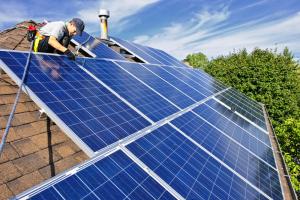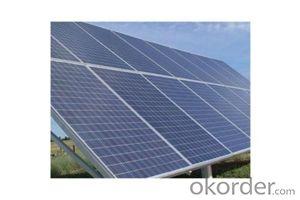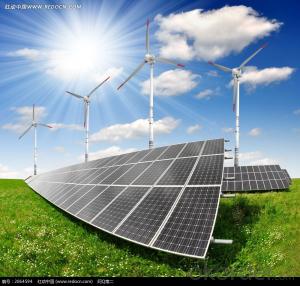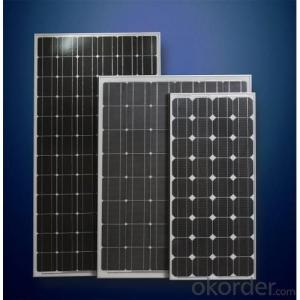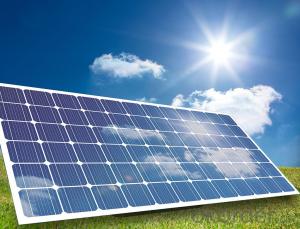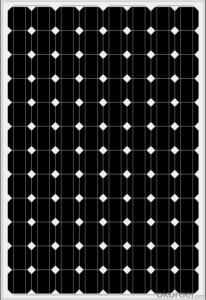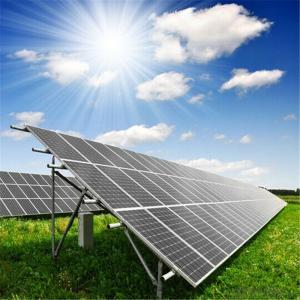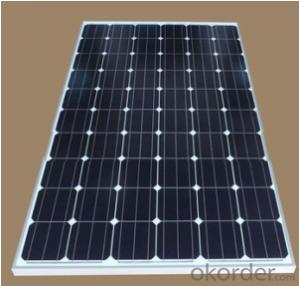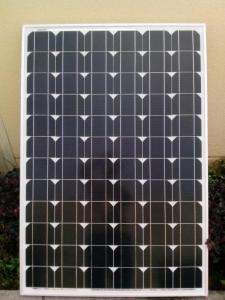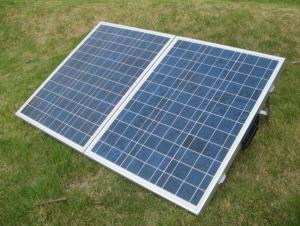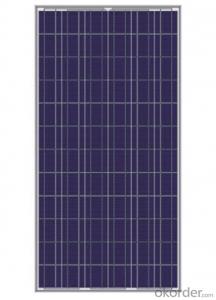Solar Panels Tallahassee Florida - Monocrystalline Solar Module 260W
- Loading Port:
- China Main Port
- Payment Terms:
- TT OR LC
- Min Order Qty:
- -
- Supply Capability:
- -
OKorder Service Pledge
OKorder Financial Service
You Might Also Like
Solar Monocrystalline (210W-225W)
Introduction of Solar Monocrystalline (210W-225W)
Solar modules use light energy (photons) from the sun to generate electricity through the photovoltaic effect. The majority of modules use wafer-based crystalline silicon cells or thin-film cells based on cadmium telluride or silicon. The structural (load carrying) member of a module can either be the top layer or the back layer. Cells must also be protected from mechanical damage and moisture. Most solar modules are rigid, but semi-flexible ones are available, based on thin-film cells. These early solar modules were first used in space in 1958.
CNBM Solar photovoltaic (PV) Panel is designed for large electrical power requirements. It is the optimal choice for both on-grid and off-grid power systems. CNBM Solar panel offers high performance of power per square foot of solar array. Monocrystalline silicon(c-Si): often made using the Czochralski process. Single-crystal wafer cells tend to be expensive, and because they are cut from cylindrical ingots, do not completely cover a square solar cell module without a substantial waste of refined silicon. Hence most c-Si panels have uncovered gaps at the four corners of the cells.
Characteristics of Solar Monocrystalline (210W-225W)
I. Solar Cell : High efficiency crystalline solar cell. Even if under the weak light, the solar module can produce maximum power output.
II. Tempered glass (toughened glass): Anti-reflecting coating and high transmission rate glass increase the power output and mechanical strength of solar module.
III. EVA and TPT: Using high quality EVA and TPT to prevent destroying and water.
IV. AI frame: Without screw, corner connection. 6 holes on the frame can be installed easily.
V. Junction box: Multi function junction box with water proof.
VI. Long lifetime: ≥25 years; Less power decrease.
VII. Good performance of preventing from atrocious weather such as wind and hails.
VIII. Resisting moisture and etching effectively, not effected by geology.
IX. The certificate issued by international authority: UL, TUV, IEC, VDE, CE.
Standard Test Conditions of Solar Monocrystalline (210W-225W)
The opto-electrical specifications shown below are stabilized values being measured at Standard Test Conditions, Irradiance: 1000W/m2, Spectrum: AM1.5 at 25°C, The info below is subject to manufacturing tolerances. Where appropriate minutes of measurement are available and are used for the dimensioning of the installation.
Advantages of Solar Monocrystalline (210W-225W)
• CNBM Solar performance guarantees for 25 years
• 10 years guarantee for workmanship
• Timeliness of delivery
• Quality Products certified (TÜV, UL, CE, VDE, ISO)
CNBM International Corporation's products including Monocrystalline Solar Panel, Polycrystalline Solar Panel have received and enjoyed famous reputation in many countries and regions in the world .As a solar panel manufacturer in China, we strive to provide our customers with excellent service, superior products and unmatched value.
- Q: I have two solar panels that were going to be trashed at work. I want to use them to charge batteries on my RV but i noticed they put out around 20 volts in direct sunlight. So i am wondering: -isn't this way too much voltage for a 2 volt system? -do a need some sort of a regulator connected to keep them from overcharging?
- 20 volts is a common open-circuit voltage for nominal 2v panels. The panels put out about 5v at full load. If the panel puts out little enough that it takes 20 hours or more to put a full charge in the battery you can get by without a charge controller - just keep the cells topped up with distilled water. A charge controller will do a more efficient job, though. The most efficient charge controllers use what's called Maximum Power Point Technology (MPPT) which lets the panels operate at their most efficient point throughout the battery's charging cycle. Available on OKorder. The charge controller should have the same or higher wattage as the panels it controls - if you're not sure of wattage, assume that they are the same as similar area panels you find for sale. Before buying a charge controller, connect the panels through an ammeter to a discharged battery. They may have been trashed because of damage and low output. You need at least an amp for trickle charge, 5 amps for reasonable recharge times.
- Q: Can solar panels be used for powering construction sites?
- Yes, solar panels can be used to power construction sites. They are a sustainable and environmentally friendly alternative to traditional power sources, providing clean energy to run construction equipment, lighting, and other electrical needs on site. Solar panels can be installed on rooftops, scaffolding, or ground-mounted systems, and can help reduce reliance on fossil fuels while minimizing noise and emissions.
- Q: Can solar panels be installed on a house with a flat roof?
- Yes, solar panels can be installed on a house with a flat roof.
- Q: Can solar panels be used in areas with high pollution or smog?
- Yes, solar panels can be used in areas with high pollution or smog. While pollution and smog may reduce the efficiency of solar panels to some extent, they can still generate electricity in such areas. However, it's important to regularly clean the panels to maintain optimal performance.
- Q: Can solar panels be installed on a rental property?
- Yes, solar panels can be installed on a rental property. However, it ultimately depends on the landlord's consent and willingness to invest in the installation.
- Q: And how do you choose the best one for the best price?I saw a 400 watt monocrystalline solar panel
- The polycrystalline solar panel has a longer life-span and has a higher efficiency. What this means is that from the energy that 'hits' the solar panel, more is caught and used to convert into electrical energy. A polycrystalline solar panel will have an efficiency of about 4%. The monocrystalline solar panel has a similar efficiency but the cells are prone to sunlight, so the efficiency drops over the years.
- Q: DIY, buying solar panels, room is barely 200 sq. ft. have a 5000 btu air conditioner, how many watts do I need, thinking of buying 75 watt solar panels, have space on the roof.
- Yes you can.. Use it to charge a 2 volt battery then use the battery power to run a 2 volt halogen bulb. Would be much better to power some LED's with the battery -- just as much light but will last longer.
- Q: Can solar panels be used in areas with high levels of noise from transportation?
- Yes, solar panels can be used in areas with high levels of noise from transportation. Noise pollution does not affect the functionality or performance of solar panels. However, it is important to ensure proper installation and maintenance to maximize their efficiency and effectiveness in generating solar energy.
- Q: Can solar panels be installed on universities or educational campuses?
- Yes, solar panels can be installed on universities or educational campuses. In fact, many universities and educational institutions have already embraced solar energy and installed solar panels on their campuses. This helps them reduce their carbon footprint, save on electricity bills, and set an example for students and the community in adopting sustainable practices. Additionally, educational institutions often have ample roof space or open areas that are suitable for installing solar panels, making it a feasible and beneficial option for them.
- Q: Can solar panels be used to power a satellite?
- Yes, solar panels can be used to power a satellite. Solar panels on a satellite are designed to convert sunlight into electricity, which is then used to power various systems and instruments onboard the satellite. The panels are typically made of photovoltaic cells that generate electricity when exposed to sunlight, allowing satellites to operate in space where traditional power sources like batteries or fuel cells may not be practical.
Send your message to us
Solar Panels Tallahassee Florida - Monocrystalline Solar Module 260W
- Loading Port:
- China Main Port
- Payment Terms:
- TT OR LC
- Min Order Qty:
- -
- Supply Capability:
- -
OKorder Service Pledge
OKorder Financial Service
Similar products
Hot products
Hot Searches
Related keywords







